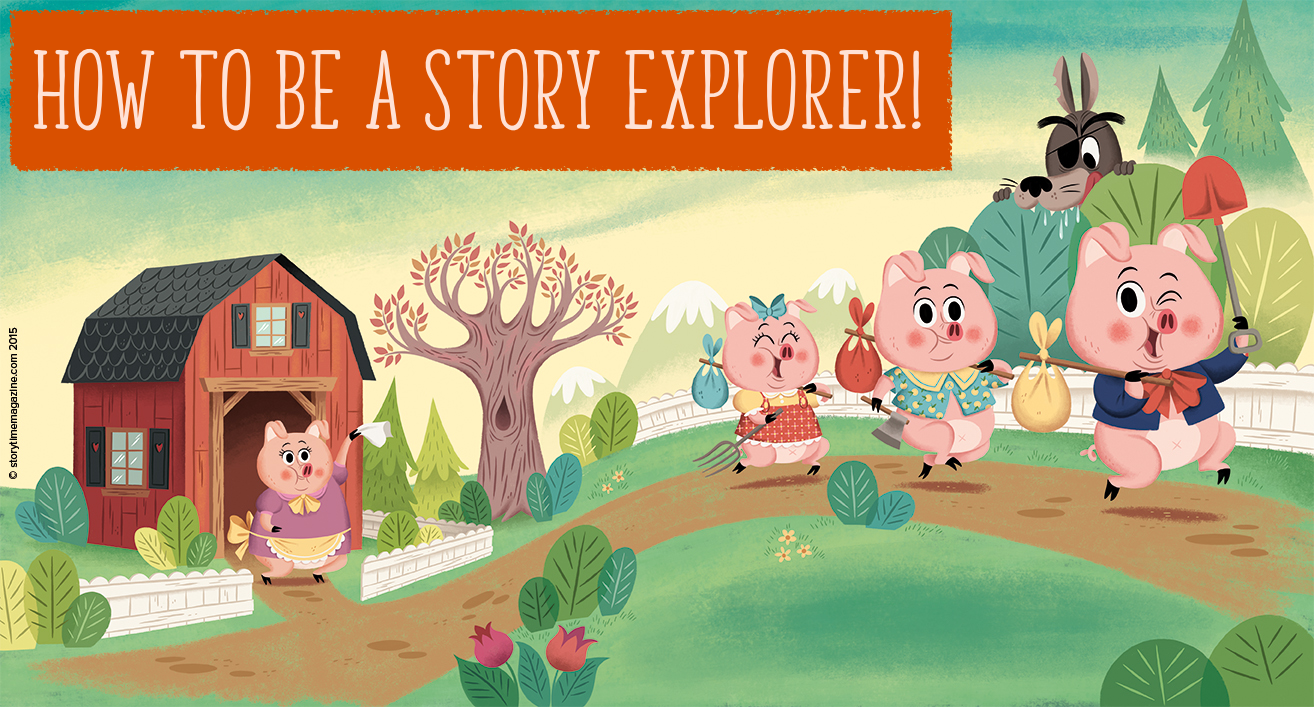 Next time you hear the cry, “I’m bored”, or are stuck in on a rainy afternoon, here’s something you can try that will save the day, and will hopefully find enormous fun. Be a story explorer and your kids will love you for it.
Next time you hear the cry, “I’m bored”, or are stuck in on a rainy afternoon, here’s something you can try that will save the day, and will hopefully find enormous fun. Be a story explorer and your kids will love you for it.
Those in the know (like clever teachers, librarians, artists, crafters and storytellers) also use the story exploring technique to squeeze in some stealth learning. You’ll soon understand why. So what exactly is the secret art of story exploring?
Put simply, it’s reading a story and then spending time afterwards exploring that story in more detail through engaging and enjoyable activities. Those activities can be a wide range of things and work best when they’re inspired by the content of one specific story. Here are some examples for you:
How to Be a Story Explorer: 4 Fun Things to Try
1. Baking
So many stories involve food that it’s easy to find one in our Storytime back issues to inspire a baking session. Why not read The Gingerbread Man in Storytime Issue 2 and use our recipe to bake your own edible runaway? Or bake the King’s Chocolate Cake from our Mouse Deer and Tiger story in Storytime Issue 22? You could also rustle up a ‘Drink Me’ bottle with something delicious to sip, inspired by Alice in Wonderland. As you add the ingredients and enjoy your homemade goodies, talk about the story and the role food or drink played in it. Imagine you’re the characters eating it. What does it taste like? What do the characters think or say about it? Act out parts of the story using the food you’ve made as props.
2. Small World
Creating scenes from a story in miniature is a great way to use any plastic and cuddly toys you have to hand, and you can use old cardboard boxes, paper and crayons or paint to recreate rooms or scenery from the story, enabling you to get really arty. Take over a whole table to do it. In schools, it’s called small world play, and there are some great examples on Pinterest. When it’s done, you can re-enact scenes (great for showing understanding of characters and storyline), and also use your imagination to make up new scenes, new endings or act out what happened when the story finished. Try it with our Fantastic Fox story from Storytime Issue 23.
3. Acting
Putting on a performance of a story you’ve read or simply roleplaying it with each other isn’t just fun, it’s a really effective way of understanding how stories work and why characters behave the way they do. You can even change key parts of the story and see what happens next. There are no rules in story exploring. Go the whole hog and dress up in costume. Alternatively, you could print off our free downloadable character masks (try The Frog Prince from Storytime Issue 21). Or use readymade puppets or finger puppets and do a puppet show. You could even just wear a sticker with the character’s name on it – whatever works best for you.
4. Crafting
Story-inspired crafts don’t have to be complicated. There are plenty of simple paper crafts you can do with kids, and each story sparks a different idea. In every issue of Storytime, we put in a quick craft that adults and kids can do together – from origami fox bookmarks for Issue 23 to a Hiawatha headdress in Issue 18. But you don’t have to follow our crafts. Just read a story and see what inspires you. For example, you could make gorgeous glittery dream jars, inspired by Roald Dahl’s The BFG in our latest issue. Or a wig of golden hair (using crepe paper), inspired by our Sif’s Golden Hair myth. Using your crafts to act out the story or to make small world scenes helps story exploring go even further.
There are other ways to explore stories, of course. You can complete story-inspired puzzles and games together. It’s one of the reasons we put Storytime Playbox in the back of every issue. Why not make amazing maps of the locations in your story or keep a scrapbook of the hero or heroine’s adventure? You can take a trip to the library and explore other stories with the same subject, genre or author. Or you can write alternative endings, character diaries, stories told from other perspectives – and invent whole new characters or follow-up stories.
The main thing is to delve deep into the story. Let it fire up your imagination, leave no opportunity for creativity unturned and squeeze every last drop of fun out of it. THAT is how to be a story explorer!
Give it a go! It’s a really rewarding way to spend time with little ones, especially over the holidays – and a great way to use your Storytime magazines.
Until next time, explorers…




